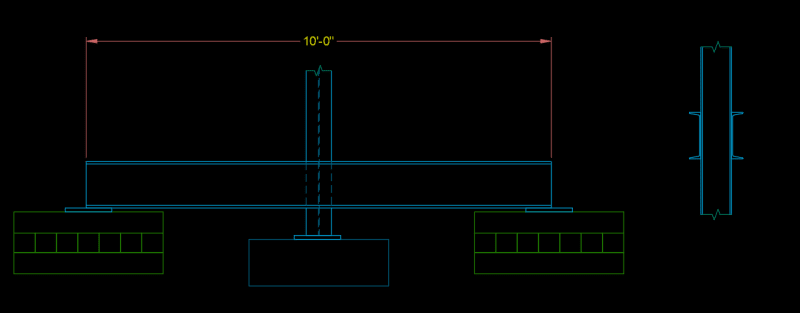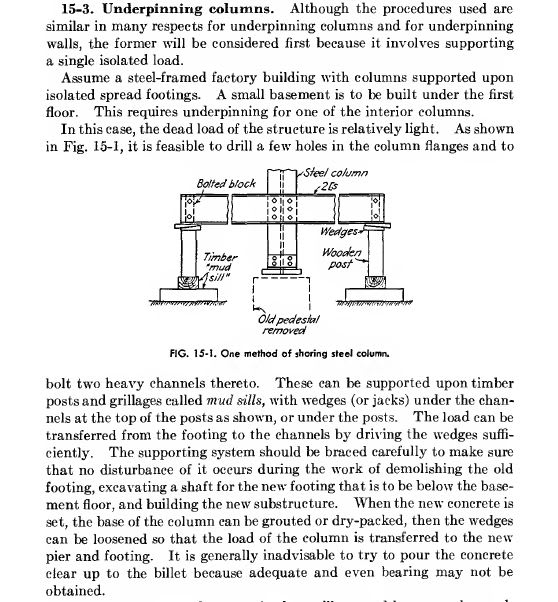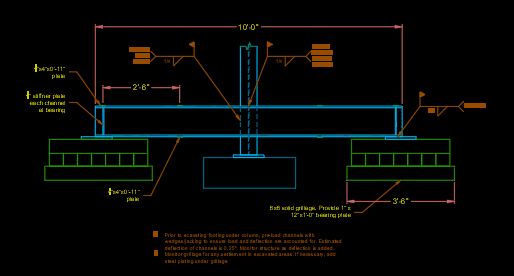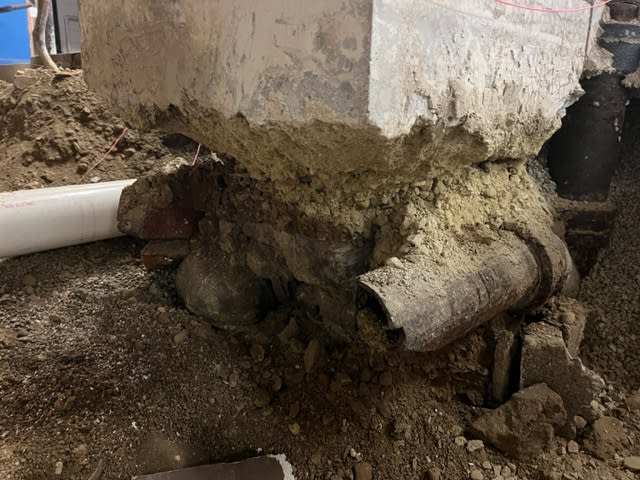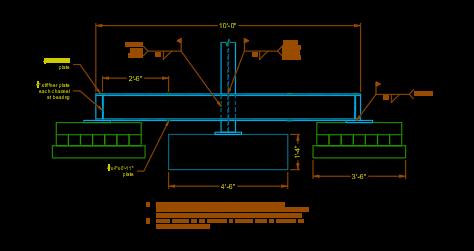JStructsteel - Grouting can and should be done, but unless the column is jacked (raised) to do the grouting, the column will be lower than it is now. The amount lower will probably be small, say, << 1 in, and this may be acceptable. However, you (engineer) make that decision, it is not something to just ignore or "pretend" is not a potential problem (say, roof ponding).
Eccentric loading, yes... more or less, the assumed point load from the beam will be off-center. Again, this could be minor... but it is easily avoided by using longer beams. Don't take any risks that are unnecessary. Also, eccentricity may NOT be minor if the cribbing is not level... a real possibility.
Redraw, to scale (horizontal & vertical), one thing for sure, the first two sketches are clearly inaccurate. We need to see exactly what you are dealing with... a picture is worth a thousand words.

